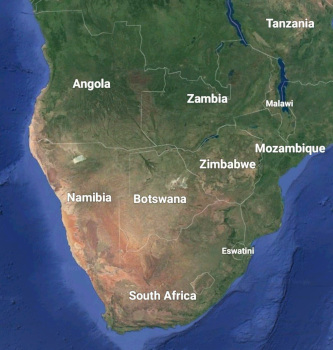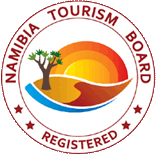



 |
Namibian towns of interest
Due to the large size of the country and its sparse population, towns tend to be situated quite a distance from each other. On average the travel distance between towns are approximately 250 - 300 kilometers.
Due to Namibia`s rich history, most towns boast their own unique ambience, architecture and it`s a great way to explore the country. We have compiled a short list of intersting towns in Namibia that most tourists are likely to travel through:
Namibia`s diverse landscape and unique ecosystem contributes undoubtedly to its beauty and breathtaking scenery.
Namibia can be divided into five main geographical areas: The Central Plateau, the Namib desert, the Great Escarpment, the Bushveld and the Kalahari - and Coastal - desert regions.
The Central Plateau area is aptly named since it lies within the central region of Namibia. The highest point in the country (2,606 meters) is located within the Central Plateau region, the Köningstein (King’s Stone) on top of the infamous Brandberg Mountain (Burning Mountain). For more information on the Brandberg Mountain and surrounds please visit our Attractions link.
The Namib Desert is the crown jewel of Namibia and what makes it even more unique, is that it is situated along the western coast of the country. The word Namib means vast place and for a desert receiving on average only 2 millimeters of precipitation annually, it still offers a diverse range of desert flora and wildlife. From the Namib Desert the Great Escarpment rises to the Central Plateau. The Great Escarpment is defined by its more rocky and mountainous formations as it rises sharply from the Atlantic coastal region to 2,000 meters.
The Bushveld is synonymous with safaris and wildlife. It thus demarcates the northeastern part of Namibia and rainfall averages 400 millimeters per year. One of Namibia’s most popular tourist attractions, the Etosha Pan is located next to the Bushveld. Ecologically the Bushveld plays a vital role in the in sustaining the rich bird - and wild-life of the region. The Bushveld forms part of the World Wildlife Federation’s demarcated Angolan-Mopane Woodlands which is especially vulnerable to human activities such as land clearing for agricultural-, woodfire - and timber - purposes.
Population size
The estimated 2017 population size according to the United Nations and World Population Prospects was 2.48 million people compared to the meager population size of 458,00 during 1950. The 2019 estimated size is approximately 2.49 million people and converting this into population density it equates to 3.13 people per square kilometer yet again underlying Namibia’s ranking as the 2nd least densely populated country in the world.
Ethnical diveristy and indigenous groups
Namibia proudly boasts 11 main ethnic groups which contributes to the uniqueness of the country’s people. Despite the various background the Namibian stem from, the country is peaceful and its inhabitants get along quite well. The major ethnic groups are:
Ovambo tribe which accounts for approximately 50% of the country’s indigenous people. The
Kavango tribe represent approximately 9% of the local population while the Herero and Damara tribes contribute about 7% each. The other ethnical groups and tribes are: the Himba tribe, the Nama tribe, the Caprivian tribe, San - and Tswana tribes. Caucasians (Afrikaans, German, British and Portugeuse descent) and mixed race (coloured and Rehoboth Basters) make up the remainder of the population.
Languages
Since half of the Namibian population is of Ovambo descent, the most popular language among the locals is Oshiwambo. English however remains the official language of Namibia and is the preferred language in the education-, business- and tourism - sectors.
Other languages spoken in Namibia include: Nama, Damara, Otjiherero, Kavango, German (from colonial settlers) and Afrikaans (a language derived from Dutch). A number of people speak Portugeuse which derives from Angola that borders Namibia to the north.
